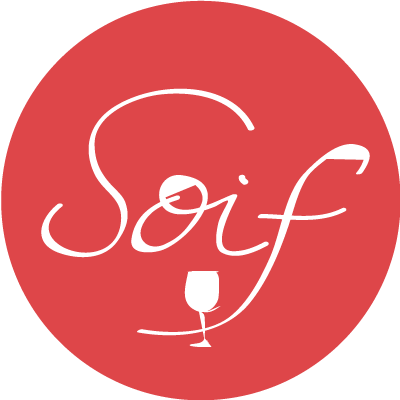2013 Marangona Lugana "Tre Campane" - Veneto, Italy
Soif is blessed with a great diversity of customers, testimony in some measure to our selection, but more likely attributable to the varied manifestations of curiosity and experience held by our customers. People drop in and ask for Vin Santo and Lambrusco and Amontillado and “Natural” Wines and sulfite free wines and local Pinot Noir and the occasional “What do you have in Petillant Naturel at the moment?” There is much at Soif that evokes memories of Monty Python and Leonard Cohen, though in this instance we do have all the cheeses in the cheese shop routine. Let us take a moment to celebrate Leonard Cohen funky sparkling wines and praise “Halleluja!! Periodically a customer will stop by looking for a nice inexpensive white wine, but without great familiarity with the broader wine world. “What sort of things typically attract you?” we ask. “I really like Pinot Grigio” is not an uncommon response. “What do you like about Pinot Grigio?” we continue with the interrogation all the while smiling. And here the conversation breaks down. For many consumers begin their wine drinking experience with a technically correct, if reasonably soulless bottle of innocuous Pinot Grigio and medium acidity marked up in price six times at their neighborhood Italian restaurant.
What was all that about? There are very few exceptional examples of Pinot Grigio. There are however a large number of delicious, non-flamboyant, crowd-pleasing [which should not be confused with boring though there is an alarming correlation], medium-bodied, medium acid white wines which are excellent sippers and versatile at the table.
To read tasting notes for the Marangona Lugana, one might conclude there is little exceptional to be found here. Pomme fruits, medium acidity, lightly creamy, modestly aromatic. Indeed making a wine which is entirely friendly to the novice while being distinctive and vivacious to the professional is no mean feat. This delightful wine manages to slip effortlessly slip into any imbibby situation and perform brilliantly without stealing the scene, sort of like J.K. Simmons before he blew up. Close inspection will also reveal a lovely persistence, spatial completeness and a real energetic quality on the palate.
Marangona is run my Alessandro Cutolo on the south shore of Lake Garda, on the eastern edge of Lombardia. The grape here is Turbiana aka Trebbiano di Lugana, though often thought to more closely related to Verdicchio than Trebbiano. Tre Campane, meaning Three Bells and signifying the three best communes of Lugana from which the grapes derive, is Marangona’s special cuvée. A portion of the grapes are picked in September, and a portion of month later in mid-October, accounting for the freshness and brightness [September fraction] and creaminess [October fraction].
2015 Kalleske GSM - Barossa Valley, Australia
The Barossa Valley is in many ways Australia’s equivalent of Napa Valley – a not terribly large swath of dreamland viticulture of outsized reputation which is subject to admiration and derision [a consequence of envy?] from those not fortunate enough to own a small slice. Grapegrowing in Barossa began in the early 19th century with the arrival of several German-speaking immigrant families from Silesia, then part of Prussia and now part of Poland. Johann Georg Kalleske , the first of seven generations of the family to run their prosperous farm, arrived in Australia from Prussia in 1838 and established the Kalleske farm in 1853, in the northwestern corner of the Barossa.
The Kelleske estate, now overseen by Troy Kalleske, practices a very orthodox form of Biodynamics. That is, they view the farm as a holistice organism, requiring few if any inputs from the outside. Preparations 500 through 507 are applied according the principles elucidated by Rudolph Steiner, and most grapegrowing and winemaking operations are informed by lunar, planetary and stellar rhythms. To read more from Troy Kalleske on their practice of Biodynamics, click here.
Biodynamics is viewed with great suspicion, doubt and even hostility by its many detractors. Indeed many sincere practitioners will admit they have no idea why or how it works. What is apparent is the strong correlation between the practice of Biodynamics and the quality of wines produced by those practitioners. Among the iconic properties which incorporate Biodyamic practices in their winegrowing are: DRC, Leroy, Dujac, Lafon, Rougeard, Nikolaihof, Pingus, Dagueneau, Leflaive, Zind-Humbrecht, Ostertag, Deiss, Beaucastel, Huet, de Montille, Cayuse, Araujo to name but a few. In short, many of the very greatest wine estates on Earth.
Like most Barossa producers, the Kalleskes concentrate on Rhône varieties. The “Clarry’s” bottling is a blend of shiraz, mourvèdre and old vine grenache. If there is one recurring [and valid] complaint regarding Barossa wines, it is their inherent ripeness and scale and sometimes careen toward 11. While lush and juicy, this wine’s consumption requires neither scheduled naptime following, nor fire suppressing equipment during. Four months in barrel refine Clarry’s nicely without encumbering it with a gruesome, oaken vaneer.
We have always loved grenache-based wines not merely for the exuberant, liqueur like fruitness, but also for their universal solvent character at the table. If a red wine seems appropriate for what your are contemplating at the moment, this Clarry’s will likely not disappoint.








